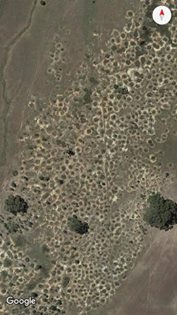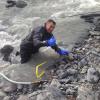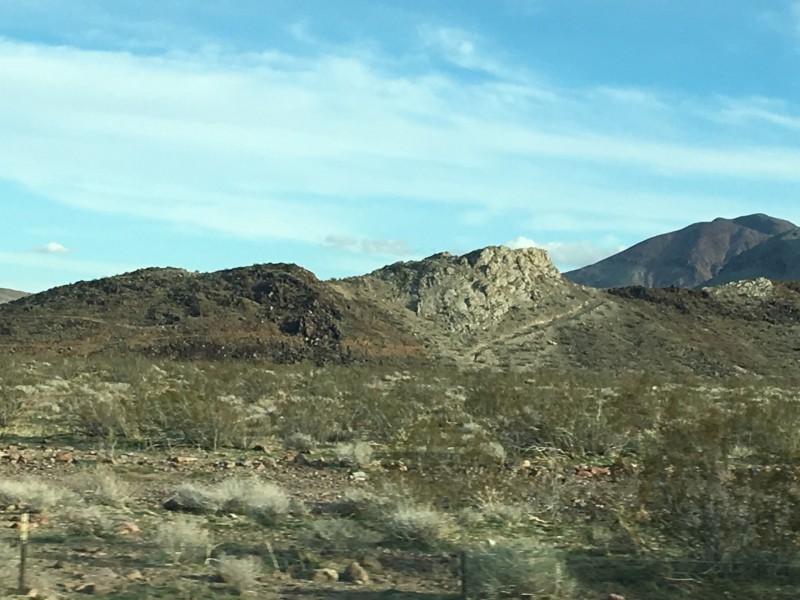Leaderboard
Popular Content
Showing content with the highest reputation on 04/11/2019 in all areas
-
I went back to the parking lot that gave up 13 silvers and 27 wheats yesterday to save some more history. I was hoping that they would scrape a little more dirt off, instead they had already laid down basecoat over most of the lot. ? There was a small area still exposed so I decided to hunt it for the last time. In just over 2 hours I took out 3 more mercs and a barber along with 7 more wheats. Ended up with 17 silver coins and 34 wheats, 2 tokens, a silver ring, 3 Mexican coins and a handful of clad in about 8 hours of hunting. I was told that they will be scraping the rest of the lot sometime this month, you know where I'll be hanging around ?8 points
-
Did an acid test on the cross and it is not silver. The VDI shows it closer to pewter. I have pewter samples from castings I have done and thinking BeachHunter might correct on this. I have a centrifugal casting machine and though the casting is relatively thin and shows no thickening from any high speed spins and the fact it isn't grayish lends me to believe it was cast hot and slow with a lead free pewter with bismuth in it rather than the antimony brit 8 pewter. This would explain why it hasn't really tarnished as the bismuth pewter is 98% tin. The master was probably clay then sand cast and polished up. Still skillfully done but if spin cast it would date it in the 50-70's? not so old. Still one my favorite finds.4 points
-
Thanks Rob, that's what I have done. The WM12 is still under warranty. I have dropped it in the mail and they will send a replacement for it as soon as they get it. Thank you Jamie at Minelab Americas. And thank all of you here in Detector Prospector land.3 points
-
You gotta love that, congrats on finding that!!! It reminds me of when I found a virgin scout/church camp and me and the guy I hunted with each found ~ 12 silver coins on the first couple of hunts, over the course of a month we dug over 100 silver coins, including four walker half dollars, couple dozen pieces of silver jewelry and sterling silver flatware, one gold ring and some cool relics. Unfortunately the camp site only started in 1940, but ended in the 1960's so there were very few pull-tabs and very little clad, often days your silver count was equal to your wheatie count ? Heck I'd run that 15" coil there, no idea how old your zoo is, but you might get some more barbers or break into a seated ?3 points
-
That makes perfect sense to me since I am considered a redneck from the hills of Tennessee... now I know why I enjoy the "finer " things of Aussie life in WA and FNQ!!!! haahahahaaha.........3 points
-
Hey All, Just a FYI, we now have the new DetectorPro Gray Ghost "Gold Series" headphones in stock for the Minelab Gold Monster 1000 or Equinox series. These are high end headphones and will give you the best audio available out there from metal detecting headphones. We snapped some quick pictures of the headphones below for you. Your Price - $125 plus S/H Rob's Detector Sales www.robsdetectors.com 623.362.1459 - office line2 points
-
Found this next to a fence in a local ball field about 8-10" down. It rang in as silver and has no tarnish so I am guessing it is pretty pure. Back has no maker marks and shows a small pebble finish so it was originally sand cast or delft clay. The symmetry isn't perfect so it was hand made or at least the original pattern was. Anyone have any info they may know on this such as approx. age etc? The jump ring is iron, wild guess is it may had had a leather cord.2 points
-
Well......what a day, I started off this morning at 5 am to head off to a Civil war site. I found the usual relics, lead, percussion caps, but, got tired of not digging and high conductive targets. The first picture is from the Civil war site. I decided to call it a day around noon and headed home to get some things done around the house. As I drove thru town I saw a front end loader and a pile of asphalt at the old zoo. I quickly did a u-turn and drove back to see what was happening, what a beautiful site, 75% of the parking lot had been striped of the asphalt. I was informed that the parking lot was paved back in 1984 and had been a dirt parking lot going back to when the guy was a kid and he assumed before that. The timing was perfect, just as I was ready to begin hunting the guys called it a day, gotta love city workers I started my hunt around 2:00 and hunted until 8:00 pm. I began finding coins within seconds of turning my machine on and hunted until I ran out of light and gas. They didn't cut all the asphalt out completely, so, I had to use my prospectors pick to chisel thru a layer of asphalt and gravel. And of course halfway thru the hunt, my pick decided to crap out on me, so I had to skip all but solid hits until I could get my pick repaired. I'll go back tomorrow after work and chase all the stuff I left behind today and there was a bunch of it ? I'm a firm believer in the depth ability of Nox after today, I have never dug great sounding targets at theses depths until today. I was getting CTX like depths with positive ID's and strong repeatable tones and only running sensitivity at 18. Most of the silver and copper was 6-10" deep and I had no doubt I was digging either copper or silver coins. The 2 nickles hit at 25-27 VDI , which was a good thing, otherwise I wouldn't have gone after them. The only thing I can attribute the depth to today was the fact I was running my recovery speed at 4 instead of 6 like I normally do. My settings were as follows: Park 1 Ground balance 0 Iron bias 0 Recovery speed 4 Sens 18 Tone break -9 to +16, just because of the urgency of the hunt and the digging conditions, I'll drop it down to -9 to + 10 tomorrow No disc 2 tones I found a nice variety of coins and some I have not identified yet due to the crust on most of them. I ended up with: 6- Mercs 1-Barber 1- Washington 1-Walker 1-Rosie 1-Mexcian dime 2-Silver war nickles 2-tokens..1-trade...1 Tax 1-WW2 Eagle coat button I'm not sure how many Wheats, or what all was dug yet, cleaning in process. I'll post a pic after I get everything as clean as possible. It was by far my best silver day so far, I'm sure there is as many left as I took out still waiting to be rescued! Thanks for looking.2 points
-
2 points
-
Phrunt- what do you mean by "bulb falsing"? Is it a problem? How to fix? I got my Gold Monster full box at Cabela's for $535.99 retail. They didn't have it on the website, but have it in the local store. Couldn't pass it up for a backup to my GB2. I want to pick up a 24K also, but it's a bummer that the price went up.2 points
-
Hey Don, I have been testing the 11" Round and it gets more depth. Just from quick testing on 1/2 gram and better, it's getting that inch. The 3" larger 11" Round over the stock 8" SDC coil does give you more depth, and then even more with the 14x9 (which is about a 11.5 to 12" round equivalent). The general rule of thumb on all coils is when you increase the diameter of the coil, you will gain in overall coverage and depth on larger gold. This means at some point you will loose some sensitivity to tiny gold in hopes of finding something a bit larger at a greater depth. For the most part, electronic prospectors that go with larger coils are not looking for tiny 1,2,3 grainers anymore, but in hopes of Gram or Pennyweight plus pieces at greater depth. Hope this helps a bit, Rob Allison Rob's Detector Sales2 points
-
Hi in the USA in Oklahoma we find Barite crystal formations with sand coatings that are called Barite Roses. Selenite (gypsum) and Calcite crystal clusters can also form under similar circumstances with sand coatings and inclusions. Jeff2 points
-
Naaah.. Gary'd say: 'Oooo, that's old!' Rick would say: 'I just saw this design on a Templar prison wall in France last week..' Swamp2 points
-
The best Aussie Factual Gold Hunting I ever watched was the last year the GoldHounds shot vid.. Too bad the necessity of needing to be a videographer as well as a juggler was cutting sooo deeply into their daily time with ear's on.. That plus considering as little wide angle terrain as they showed other's were still able to determine approx where they were, although I'm not quite sure how those others planned to gain access while still expecting to live to a ripe old age.. Be that as it may, those gents could find some hunka-chunka chunkies! I could easily digest X 44 minute shows a season of them @ hunt & recovery.. Swamp2 points
-
I have checked in on this thread whilst at work today and had time to ponder. It's been a hard day ? There is a possibility that all the gold is gone. It was only shallow and the GPX got it all. But based on Steve H, JP, KiwiJW and heaps of others writing over time how the GPZ re-ignited patches that they felt were dead and buried - it seems unlikely that your little patch has flat-lined just yet. This quote intrigues me. These bits are supposed to be the domain of the Z (or an SDC)! These are the same bits that the GPX series supposedly struggle on. So that just brings me back to the feeling that something is not right with the settings or some part of the set-up. If heading back to this same spot I would use: Ground Mode - Normal (as long as it is usable). Gold Mode - High Yield. Threshold - 27 ish. Sensitivity - only take it to a point where it is just starting to get unstable and then go back 1 setting. I do understand that running hotter can also be advantageous and Steve H has outlined his insanely hot settings and Kiwi gets away with them too (and I've used these to clean out patches of tiny bits). But just to start, this is where I would go and allow myself to listen for the tiniest change to that flat line threshold - rather than trying to listen for the 1 dollar coin in a tumble dryer full of 5 cent pieces ? Volume - about 8. Volume Limit - about 10. Audio Smoothing - Off. Ground Balance - Semi - auto. I know you also mentioned here and in your email that you tried Extra Deep. From the GPZ manual - Extra Deep This setting is specifically designed for searching for deeply buried nuggets. Large, deep nuggets (typically ≥ 50 grams) produce complex and subtle audio responses, so this setting should only be used by skilled operators. Shallow targets may be missed with this setting when compared to the ‘High Yield’ or ‘General’ settings. This setting is not recommended for general use. The bold bits make me think 3 things. You mentioned that you reckon the run of gold is shallow. So maybe not the best mode. A good mode for nuggets bigger than 50 grams (wouldn't that be sweet!). Has this patch produced anything near that range or bigger? Complex and subtle audio responses - may be getting masked by the hot settings background noise? Lastly, I would take the SP01 out of the equation for a bit. This is in no way a slight at Pat or Nenad. Regardless of brand I would suggest the same thing. It is a matter of eliminating possibilities where something might be falling down. Maybe the filter choice is not right, maybe the SP01 is faulty, maybe the WM12 is faulty, maybe there are battery issues, connections, etc. I would just go back to the basic set-up and see what happens. Boosters can be great but the basic Z and WM12 combo works pretty well too. Most importantly, don't give up on the GPZ yet. It may be an ergonomic nightmare, have limited coil choice and be the price of a small car but it is an awesome gold finding machine and if I knew I had the time and the disposable cash I would have mine back in a heartbeat ? I hope something in all that dribble helps you to find the yellow stuff ?2 points
-
I found the same thing. I always scrubbed my coil except in very hot ground (some areas near Stuart Mill/ St Arnaud and some areas around Maryborough)- I just lifted coil a little and it worked perfectly. I find exactly the same thing works with flat wound coils on the GPX.2 points
-
2 points
-
That's what I was thinking. Lots of 'weekend' artisans out there. I recall when in college (long time ago ?) one of my dorm-mates was making silver rings. They were pretty crude but definitely a high grade of silver (with no marks). I've also found high grade silver jewelry with iron attach rings. Doesn't make a lot of sense to us detectorists (because we know how bad iron corrodes in the ground). I guess whoever made it wasn't figuring it would end up buried. ? BTW, a good specific gravity test would go a long way to confirming, but that can be difficult to do because the volume (difference between dry weight and submerged weight) is difficult to determine with high accuracy. You're effectively trying to distinguish s.g. of 10.3 (sterling or coin silver) from s.g. of 8.9 (silver plated copper).2 points
-
It is silver, maybe not 925 but since it was sand cast there might have been some contamination that got on the surface in some areas. Iron jump ring doesn't seem to be plated. No marks doesn't always mean anything, it could have been made from a small maker. Still a cool find since it was right next to a metal fence, probably why others had missed it. The park I was at has a path that follows the original path that passed through an old farm field. Sometime in the 1940's they turned it into a baseball diamond. Other BB diamonds in the same park vary in age, couple I had picked up an 1877 sitting liberty 2" in the sand and a few 1906 indian heads. Buffalos I pulled from there are in rough shape and very hard to read.2 points
-
Steve,1st time that i have seen this old post of yours and makes alot of sense,in the last 12 months or so instead of running sensitivity as high as i use too i have reduced this setting down by massive amount,also either reduced discrimination down to zero or in most cases All Metal mode.My Deus and a original green T2 have all been running at reduced sensitivity on all my roman and saxon sites,but my finds rate has increased pro rata. For some reason everyone want too crank the sensitivity right up and use the biggest coils that we can buy and expect to find the holy grail of finds,alas it does not work like that,all my detectors had big coils on predominately for clear pasture sites,but the only real advantage gained was ground coverage,but detecting became a nightmare and in the last 2 years i have done a total reverse and not only running all my detectors at reduced power but also reduced the coil sizes below stock coil size and my finds rate and doubled. A tremendous article and have 'bookmarked' it for future reference......many thanks2 points
-
Mankind's attitude to gold is bizarre. Chemically, it is uninteresting - it barely reacts with any other element. Yet, of all the 118 elements in the periodic table, gold is the one we humans have always tended to choose to use as currency. Why? Why not osmium or chromium, or helium, say - or maybe seaborgium? That's where I meet Andrea Sella, a professor of chemistry at University College London, beside an exquisite breastplate of pure beaten gold. He pulls out a copy of the periodic table. "Some elements are pretty easy to dismiss," he tells me, gesturing to the right-hand side of the table. "Here you've got the noble gases and the halogens. A gas is never going to be much good as a currency. It isn't really going to be practical to carry around little phials of gas is it? "And then there's the fact that they are colorless. How on earth would you know what it is?" The two liquid elements (at everyday temperature and pressure) - mercury and bromine - would be impractical too. Both are also poisonous - not a good quality in something you plan to use as money. Similarly, we can cross out arsenic and several others. Sella now turns his attention to the left-hand side of the table. "We can rule out most of the elements here as well," he says confidently. "The alkaline metals and earths are just too reactive. Many people will remember from school dropping sodium or potassium into a dish of water. It fizzes around and goes pop - an explosive currency just isn't a good idea." A similar argument applies to another whole class of elements, the radioactive ones: you don't want your cash to give you cancer. Out go thorium, uranium and plutonium, along with a whole bestiary of synthetically-created elements - rutherfordium, seaborgium, ununpentium, and einsteinium - which only ever exist momentarily as part of a lab experiment, before radioactively decomposing. Then there's the group called "rare earths", most of which are actually less rare than gold. Unfortunately, they are chemically hard to distinguish from each other, so you would never know what you had in your pocket. This leaves us with the middle area of the periodic table, the "transition" and "post-transition" metals. This group of 49 elements includes some familiar names - iron, aluminum, copper, lead, silver. But examine them in detail and you realize almost all have serious drawbacks. We've got some very tough and durable elements on the left-hand side - titanium and zirconium, for example. The problem is they are very hard to smelt. You need to get your furnace up into the region of 1,000C before you can begin to extract these metals from their ores. That kind of specialist equipment wasn't available to ancient man. Aluminum is also hard to extract, and it's just too flimsy for coinage. Most of the others in the group aren't stable - they corrode if exposed to water or oxidize in the air. Take iron. In theory it looks quite a good prospect for currency. It is attractive and polishes up to a lovely sheen. The problem is rust: unless you keep it completely dry it is liable to corrode away. "A self-debasing currency is clearly not a good idea," says Sella. We can rule out lead and copper on the same basis. Both are liable to corrosion. Societies have made both into money but the currencies did not last, literally. So, what's left? Of the 118 elements we are now down to just eight contenders: platinum, palladium, rhodium, iridium, osmium and ruthenium, along with the old familiars, gold and silver. These are known as the noble metals, "noble" because they stand apart, barely reacting with the other elements. They are also all pretty rare, another important criterion for a currency. Even if iron didn't rust, it wouldn't make a good basis for money because there's just too much of it around. You would end up having to carry some very big coins about. With all the noble metals except silver and gold, you have the opposite problem. They are so rare that you would have to cast some very tiny coins, which you might easily lose. They are also very hard to extract. The melting point of platinum is 1,768C. That leaves just two elements - silver and gold. Both are scarce but not impossibly rare. Both also have a relatively low melting point, and are therefore easy to turn into coins, ingots or jewelry. Silver tarnishes - it reacts with minute amounts of Sulphur in the air. That's why we place particular value on gold. It turns out then, that the reason gold is precious is precisely that it is so chemically uninteresting. Gold's relative inertness means you can create an elaborate golden jaguar and be confident that 1,000 years later it can be found in a museum display case in central London, still in pristine condition. So what does this process of elemental elimination tell us about what makes a good currency? First off, it doesn't have to have any intrinsic value. A currency only has value because we, as a society, decide that it does. As we've seen, it also needs to be stable, portable and non-toxic. And it needs to be fairly rare - you might be surprised just how little gold there is in the world. If you were to collect together every earring, every gold sovereign, the tiny traces gold in every computer chip, every pre-Columbian statuette, and every wedding ring and melt it down, it's guesstimated that you'd be left with just one 20-metre cube, or thereabouts. But scarcity and stability aren't the whole story. Gold has one other quality that makes it the stand-out contender for currency in the periodic table. Gold is... golden. All the other metals in the periodic table are silvery-colored except for copper - and as we've already seen, copper corrodes, turning green when exposed to moist air. That makes gold very distinctive. "That's the other secret of gold's success as a currency," says Sella. "Gold is unbelievably beautiful."1 point
-
Hey everyone.... Here is an interesting dig. This weekend at my favorite lot site I picked up a signal bouncing between TID's 23 to 28. Never hit a 29 or 30. It was not screaming at me like the Kennedy Half I got there recently. Since I pull a lot of rusted nails from this site, I thought this would be another nail or possibly a clad quarter. Low and behold, a 1945 Walker Half on edge 4-5" under a pine tree root. I slightly nicked the rim with my Lesche....bummer. I never would have ignored a signal like this but it sure fooled me. Settings: Park 1, 50 tones, 0 IB, 3 rec, 22 sens1 point
-
Hey Steve, The GPZ 7000 Promo has been a pretty good hit since you get the free 19" coil included. I recommend you reaching out to your local dealer when possible for anyone interested in this great deal. We also offer a money down will hold the deal plus we are including the "2019" Prospectors bundle package along with the FREE 19" coil. Wishing you all new GPZ customers much success out there swinging. Rob Allison www.robsdetectors.com1 point
-
Ganes Creek and Moore Creek were my most favorite places to go nugget hunting in Alaska. I met Steve in Vegas once and then again on my first trip to Ganes while visiting his store with the Whites rep Steve Houston. Found many, many ounces of gold detecting at both places. Hospitality and comforts for the clients was their first priorities, next came the Gold....As Steve says the "golden age" of detecting is over at those places which is really sad. I have been trying to make a trip up to Alaska every year and in 2018 a friend and I went to AKAU in Nome, found closer to 10 ounces and had a great time. We will try again this year. Thanks Steve for the memories..1 point
-
That's too bad. The condition of the silver coins reminds me of the saltwater finds that have been posted on this site. It just kills me to see such degradation. In my area the US nickels and bronze pennies suffer, but it varies according to soil conditions. Anyway, I'll be interested in how these look cleaned up.1 point
-
Street tear outs are tough...you gotta get em when you can..I've seen some get torn out and then covered back up the same day.. especially the side walks this seems to happen with. Great saves and looking forward to the rest of the story. strick1 point
-
It is possible it was spin cast and the masters were sand cast. The back has the sand cast texture making me think they put the back on the drag side of the frame then packed the top. I have done similar technique on belt buckles to give the recesses a nice texture. Putting the pattern face up in a sand mold helps prevent washout when the metal is poured. Other pics are some castings I had done using delft clay in a similar mold but delft clay has a much finder texture. Cool you have done jewelry work BeachHunter, now I have someone I can try to pick their brains :)1 point
-
1 point
-
Nice - but the ground looks pretty tough on the coins. Good luck with the next go round. Rich -1 point
-
I'd say you are correct on all points kac. Upon closer inspection, it does look like a pre-centrifugal casting. The composition is a good clue to it's age. Interesting and awesome find.1 point
-
Congrats on a fantastic hunt!!!! I've driven by a number of old street tear outs but unfortunately, too much traffic around and/or bad timing on my part.1 point
-
If we ever get to meet Paul, I am confident I could change your mind. I think you may have spent too much time in Aussie 'redneck' country.1 point
-
if one was a beer connoisseur, which obviously no one is on here, one would know that XXXX is only to be consumed at 1-3 degrees C. Any warmer than that and it will taste like all the beer east of Kalgoorlie and south of Clermont.... Nasty, mexican swamp water....?1 point
-
Very valid points you have there. The quicker pulse delay will be a game changer if...... like you say it delivers the quieter/deeper detection of beaches for lost gold.1 point
-
You are likely right about the coin Mark. I suspect however, that you are likely wrong about the Impulse AQ being too late. Here’s my thought on that. If it turns out that the statements which LE.JAG and others have made about depth on targets large and small and the quiet operation over all kinds of beaches which they have described is really there, then it will show quickly in the experiences of early users. If that sort of user experience doesn’t materialize, then it will be a problem. If it does however, it will be a case of “I hope you get one before your hunting buddies do”! Mind you - I am talking strictly about gold at the beach. What can be done about PI’s inland in terms of making good on the promise which the TDI never quite delivered on - that’s a whole different kettle of fish.1 point
-
They had it blocked off but they all know me so well, they had no problem with me going in. ?1 point
-
Me too, I hate to see them go under. Their machines have a superior audio function to say the least. When I had the Vaquero I could actually tell when the detector had found a pencil eraser metal tip. Amazing the clarity of the audio reports on the Tesoro machines.1 point
-
Rumor has it they filed for bankruptcy and if so that could mean they are shaking debt and reorganizing or shutting down. Only ones that really know is the Giffords and would be nice if they just posted something on their site. My hunch might be re-organizing but I'm being hopeful.1 point
-
I almost never took my GPZ coil off the ground and wore out several skid plates. Lifting off the ground is to deal with extreme ground. Generally not required in the U.S. From https://www.minelab.com/__files/f/254716/KBA 24-1 Basics of the GPZ 7000 Technology Zero Voltage Transmission (ZVT).pdf "In any of the above settings, it pays to swing the coil an inch or so above the soil surface if the soils are considered saturable (VRM). Saturable means that a detector ground balances well if the coil is raised and lowered down to about a few centimetres above the soil surface, and for the worst saturation, down to several centimetres, but not if the coil is swung up and down to a height lower than these saturation ‘height thresholds’ (e.g. down to the soil surface.) In addition, the degree of (VRM) soil saturation is considerably less for Difficult or Severe than Normal. As the metal detector coil is moved towards a soil, the transmitted magnetic field in the soil gets stronger. This causes a (very) small degree of VRM signal ‘saturation’ that happens to cause the resistive signal relative slope of the tilt to change. This is why the amount of VRM soil saturation is far less for Difficult and Severe than Normal. Soil saturation often requires the user to operate the coil several centimetres above the soil surface for best results. However, whilst soils do have resistive signal that are very accurately log‑linear, unfortunately this is not perfectly accurate for some soils, and, because the GPZ 7000 has such very high sensitivity, even miniscule deviations in the straightness of the line of the log‑linear resistive signal will cause ground noise signals. Severe is less sensitive to these miniscule deviations than Difficult. Whilst the GPZ 7000 does not have a dedicated ‘salt’ detection setting (saline soils), the best Gold Mode setting for salt soils is Extra Deep." That article was later refined into this newer article on the GPZ and bad ground.... https://www.minelab.com/__files/f/254714/KBA 27-2 Gold Detecting in Difficult Ground Conditions.pdf1 point
-
Ganes Creek ran for ten years as a pay-to-mine operation - there are several more Ganes Creek stories on the website about the place. Over 1000 ounces of gold nuggets and specimens found by visitors in that ten years including several nuggets weighing over a pound! Our visit got the ball rolling and so was the start rather than the end. The scale of Ganes Creek commercial operations made the pay-to-mine pale by comparison. The last thing they were worried about was visitors finding too much gold. Just the opposite - when it got down to where people were having to work too hard for “too little gold” then the place got shut down. I don’t expect it will reopen to the public though commercial operations continue to this day. Between Ganes Creek and my own Moore Creek operation a “golden age” of nugget detecting was possible for visitors to Alaska. Opportunities still exist but nothing even close to what those two operations produced.1 point
-
As a mate says all too often "In my Pocket". But if we can round up some keen gyro gear losses who are software design geniuses as well as gold hunters, they`ll design a software operating system for the AMD that will tell us where the gold is. Then not only the mate will have a pocket full.1 point
-
In the original nail board test, Monte never put the target under the nails - the test showed how well a detector with discrimination can reveal a high conductor target (an Indian head penny) in proximity to nails and dependent on direction of coil sweep. Monte used new nails so that the test could be performed by others under the same controlled conditions. There are lots of tests with gold rings under nails also - here’s a long video which I have linked to before which shows various tests.1 point
-
Just wanted to take a moment to introduce myself to those that have no idea who I am or what I'm up to. I mainly metal detect for nuggets now (chased the gold in Alaska, Nevada, Utah, Arizona, Idaho, Montana, north-central British Columbia, south-eastern British Columbia, Alberta, but now I spend almost all of my time chasing the gold in British Columbia, Canada), used to dredge, sluice, high-bank, snipe, etc., (still do a bit for fun) but for more than a few years now, I've been associated with a large-scale placer operation, one that has slapped on me the title of their mining consultant. Sounds grandiose, however in no way is it, but they like to have me do testing for them with my detectors after they've finished cleaning a section of bedrock with their massive, heavy equipment. Why have me on site? To see what they're missing. Furthermore, after I've finished poking around, they've gone back and taken more bedrock (sometimes several feet) at times when I get a lot of gold in a hurry (or they've headed in another direction if there's a good line of pay shooting off under the overburden away from where they were trending), and other times when there's hardly any gold found with the detectors, they bury that bedrock right quick. It's a win, win situation for both of us as they value what I can do with my machines, and I value the privilege of the incredible opportunity. Their only caveat is that I can't tell the total weight of the gold I find to anyone outside of their crew (and I always must report it to them), but hey, who can't live with that, right? Oh, and they let me keep what I find, won't take a percentage (I've tried many times). In addition, I know a lot of other claim and lease owners that have properties they're not currently working, ones with abandoned excavations and sites, or ones they haven't got to yet, and they love to have me snoop around with my detectors as well, and if I find anything promising, they set up and get after the gold. I've been doing that for quite a few years, but I still like to check out unfamiliar, un-staked ground too. In addition, I like to write stories about my gold hunting outings, and oftentimes, I'll include information for any rookies out there that are trying to figure things out as they get started. Why? That's how I got started; a few good people (my original mentor is now 88) took me under their wing and taught me the ropes (a few clichés too many in that sentence, I know). My one son is now a dedicated nugget shooter (the other one lives thousands of kms away), and I love training him, plus my wife is now onboard with chasing the gold (she used to love panning my dredge concentrates, always heavy with goodies and always a good time for her and my mother-in-law [yeah, I know, sometimes the word fun and mother-in-law don't get used together in the same sentence]), and I'm ordering my wife a shiny new detector this winter because she's seen what we're getting (she loves to pan down our scoops of quick finds from the detectors which we slap in the pans when they're target rich for her to have some fun with; we call that speed-panning as it saves us the downtime of isolating the positive signals out of the scoop each and every time, giving us bonus time swinging the coils). Looking forward to get to know many of you, and some of you I already consider friends from associations on other forums . . . All the best, Lanny1 point
-
1 point
-
Gerry's Detectors is taking $1000 deposit to lock in the GPZ-7000 Promo that ends April 15th. You'll still get the $1500 Deep 19" coil for FREE as long as you pay the remaining balance off by May 15th. PayPal occasionally runs No Interest for 6 months, as another option. I just need to make sure we lock you in by the 15th. Yes I'm still offering the 15% Military Discount to those who qualify. Photo is the last hunt I did at Rye Patch, NV in 2018 with my own 7000. Over an ounce of nuggets and a couple higher dollar chevron pieces too.1 point
-
Hey Guys, Just a FYI, the Minelab GPZ 7000 Metal Detector with the FREE 19" Super DD Searchcoil Promo will end in just a couple of weeks. This has been a huge hit here in the US. The Promo end date is April 15th, 2019, so anyone looking to get a FREE $1500 coil in their GPZ purchase, this is the time to buy. Thanks for all the customers that have taken advantage of this package through us here at Rob's Detector Sales. Contact us or your local dealer for any questions or further details. Rob's Detector Sales 623.362.1459 www.robsdetectors.com - website1 point
-
All of these are among finds I have kept from the past. They have been in a storage unit. I am fascinated with geology but have trouble ID'g rocks and don't like to smash em. This is a lot of pics ... maybe too many?! Thanks in advance for all who take a moment to share their expertise. Much regards! ^ is this part of a thunderegg? ^ the shell of the rock above (part of a thunderegg?) ^ could this be a thunderegg or just jasper? ^ a pyrite next to my thumb, is the middle rock a chalcopyrite? ^ shell of the rock pictured below ^ assume this is a banded agate? ^ could it be a geode? ^ not a great pic -- this coloration is actually light to deep purple/ violet ^ heavy, as if a cannonball, damn near perfectly round ^ also heavy nearly round rocks ^ sunstone? found in a creek north of the Arctic Circle ^ can't even guess ... looks like a vein within a vein, what could that material be? ^ nature couldn't create such an indent, could it? ^ same stone as above ... is this a relic of sorts? ^ same stone as above ^ could this have been a spear head? ^ might this be a corondum? ^ same rock as above; what are those inclusions -- jasper? can't be rubies.. ^ same as above ^ what happens when your 3 year old daughter finds your rocks!1 point
-
Here is a contact zone between what appears from a distance to be basalt and granite in Southern California. As Steve said this one is obvious. I took this picture from the road but I am unable to go out there. I am down at fort Irwin training. There are hard rock mines in the area that have produced gold with a little placer production too.1 point
-
All a contact zone in in simple terms is a place where two different rock types come together. This can be very obvious, like green rock next to red rock. Or nearly invisible, where one type of salt and pepper rock comes up against a different type of salt and pepper rock. If the contact zone is buried by overburden, the contact itself can grade from really obvious to invisible. In fact, you may not be able to see at ground level what might be obvious from an aerial view. You are simply trying to see something at surface level, like two different soil types, that might give a clue to the contact zone below. In my opinion you are thinking too hard. You say you know gold is in the immediate area? Personally I hit the ground and start wandering around with my detector scanning as I go. The signs I look for is hand dug holes, ditches, piles of dirt, stacked rocks... anything that indicates prior work was done. If it looks interesting, put the coil over it. Quartz is a nice indicator rock, but most places where you see quartz you won’t find any gold. It is just a very common rock. Ironstone and iron staining is nice to see. Each area is different really. Once you get familiar with an area either though experience or reading geologic reports of the area you can get a better feel for what rock types are associated with the gold in that area.1 point
-
Good job! You can in theory find gold almost anywhere modern humanity frequents. The jewelry needs to get lost in the first place, and that means places where clothing is changed and highly physical activity takes place. A soccer field is the classic example because the team often sheds street clothing on the sidelines. The soccer play itself plus possible viewers around the perimeter all add up to a great location. Gold can be as close as the nearest park, and often more gold can be found with less effort and expense than chasing gold nuggets.1 point

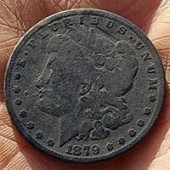


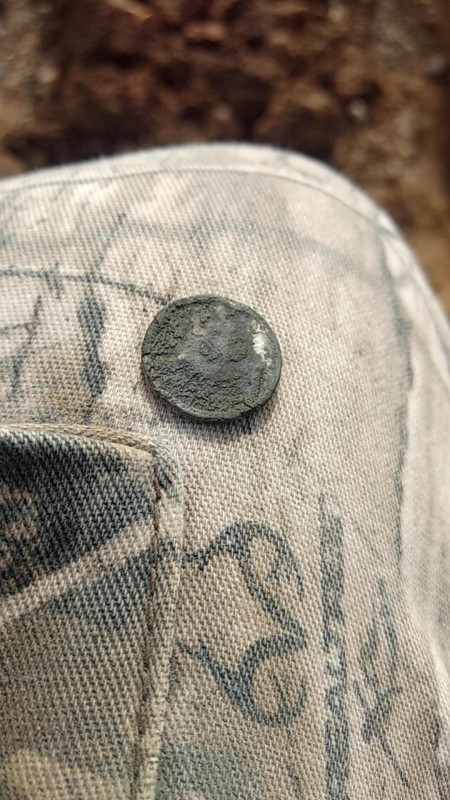
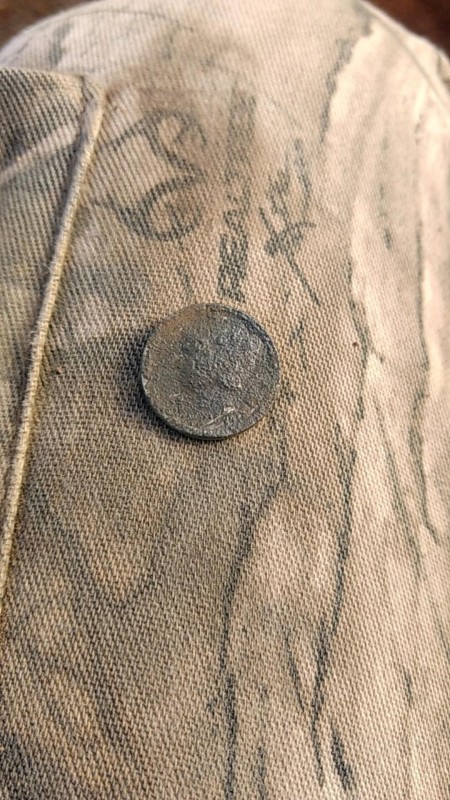
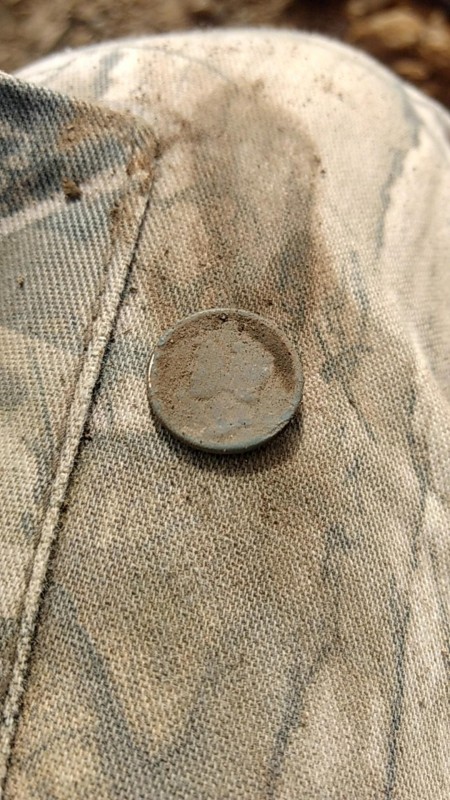
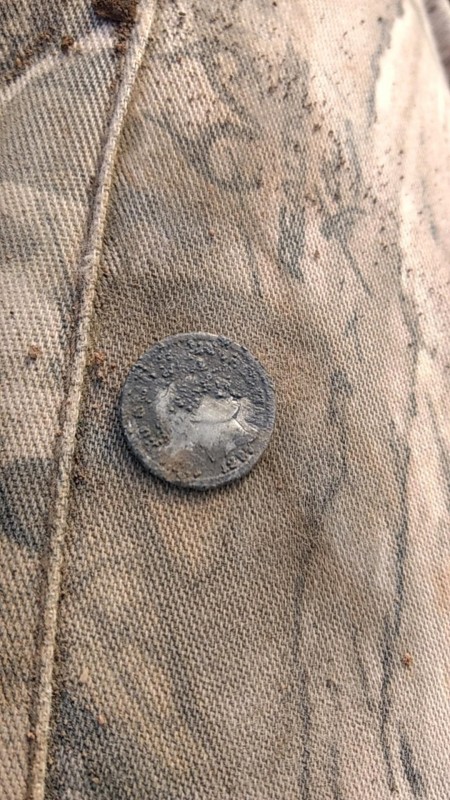

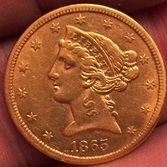

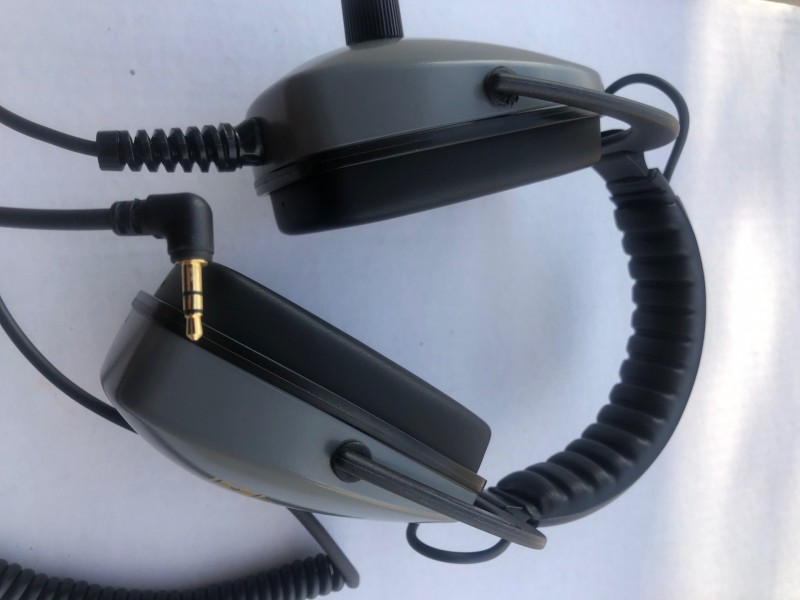
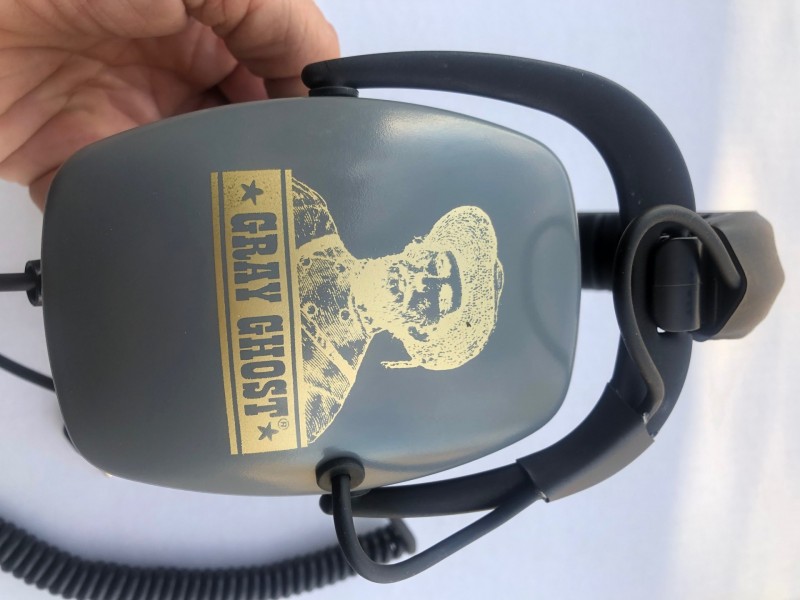
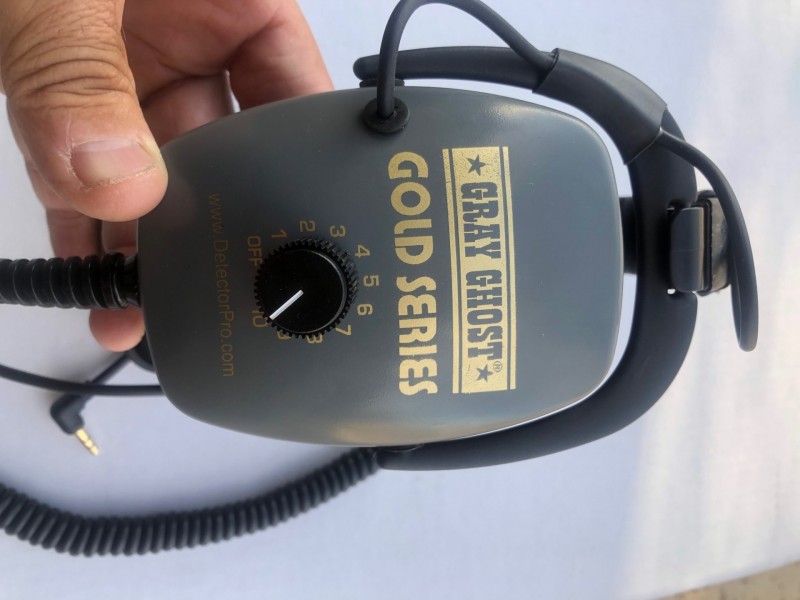
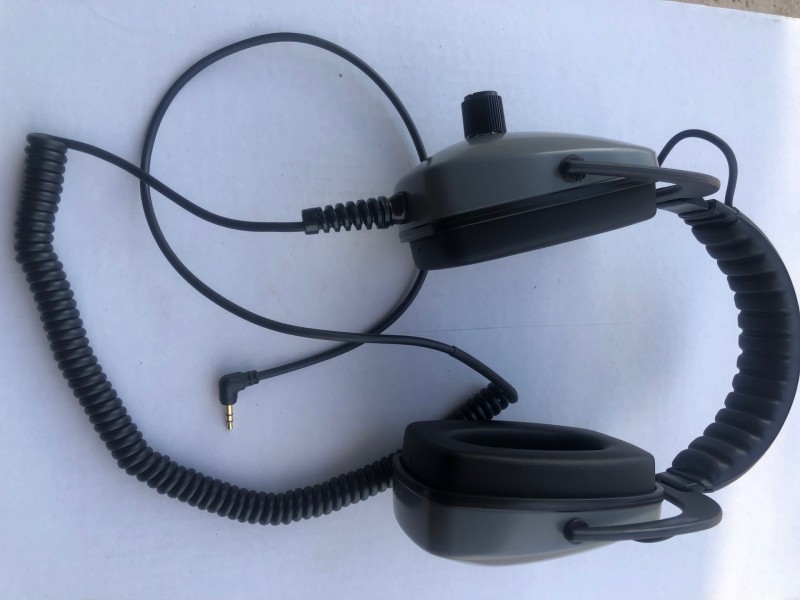
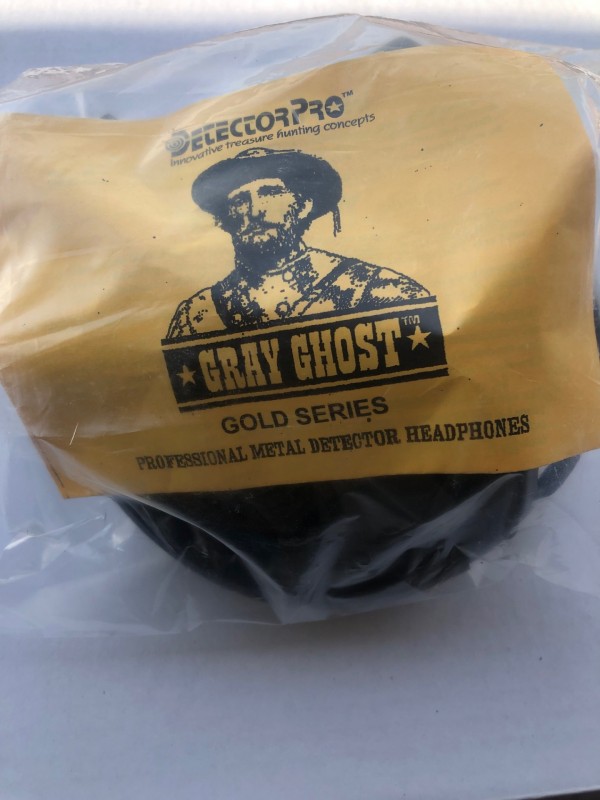
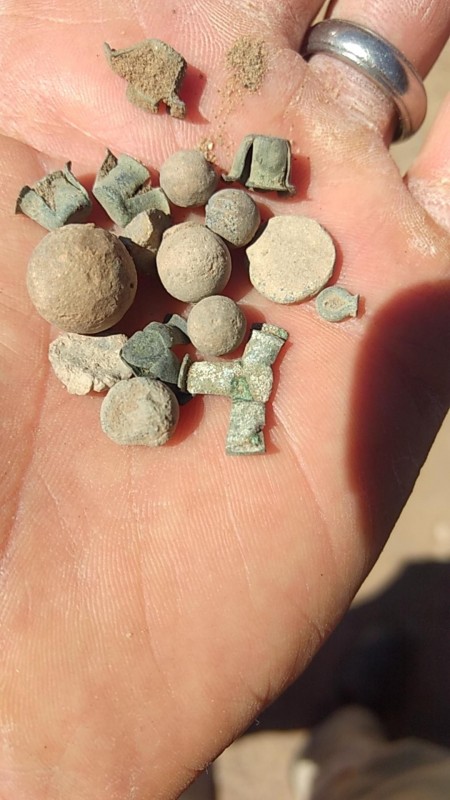
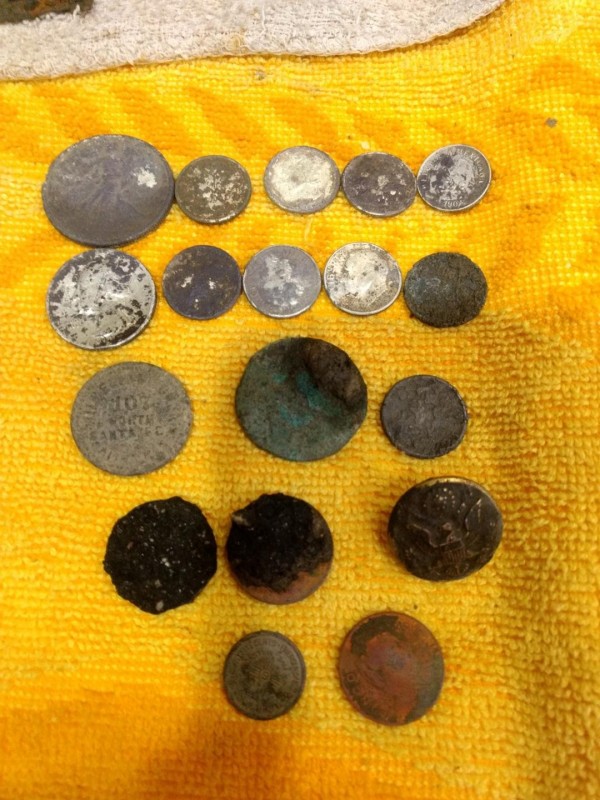
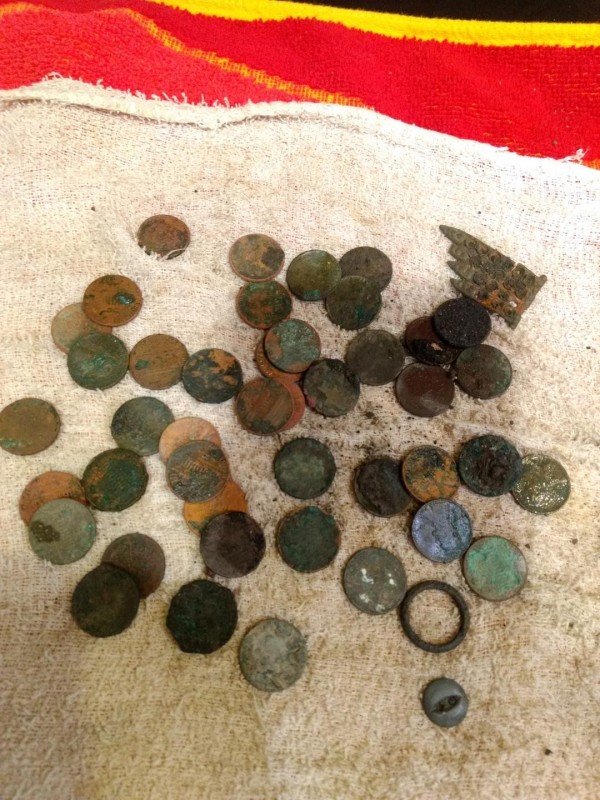
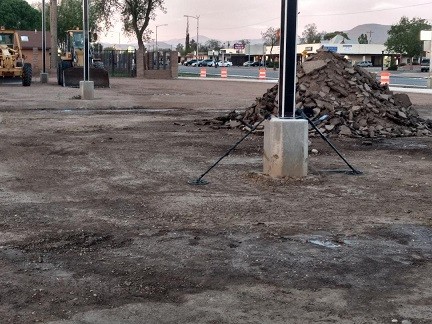
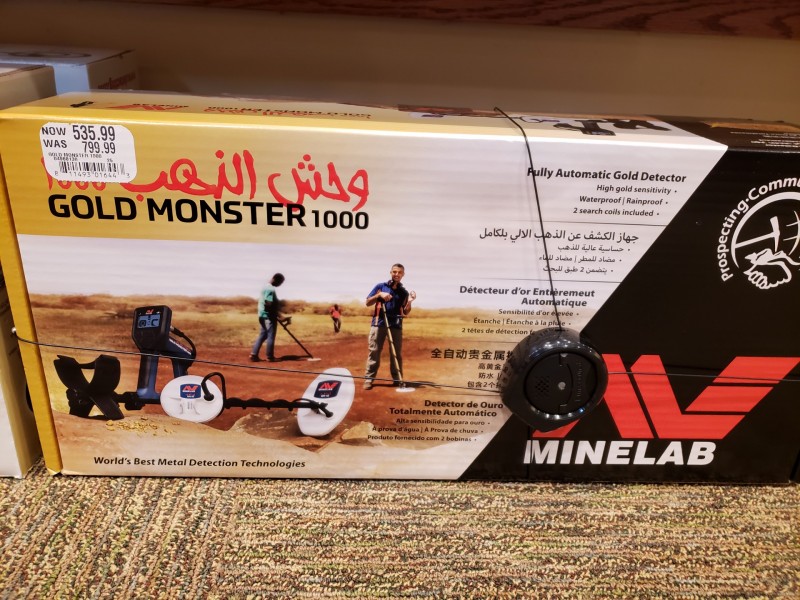


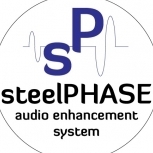



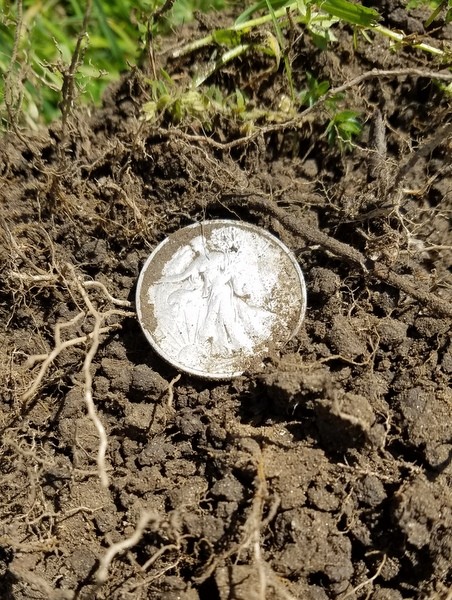

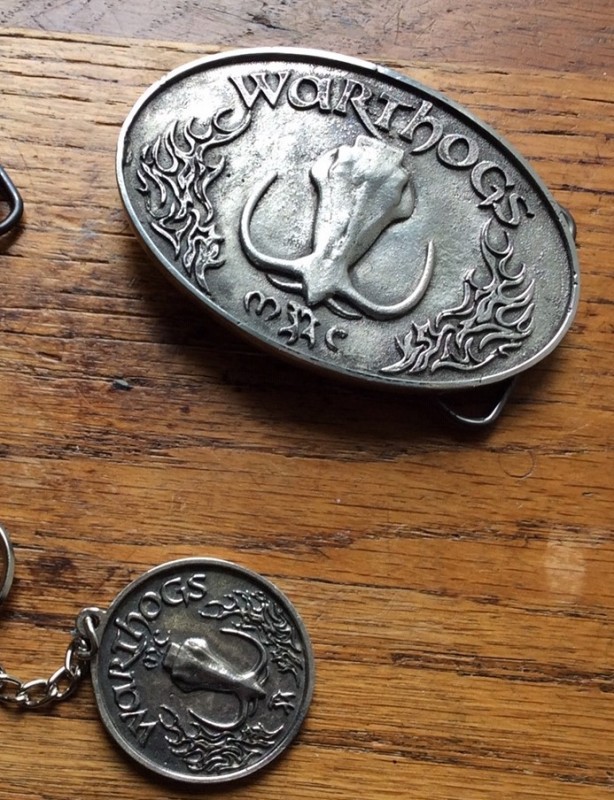
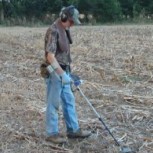
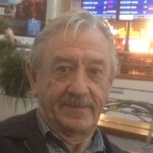

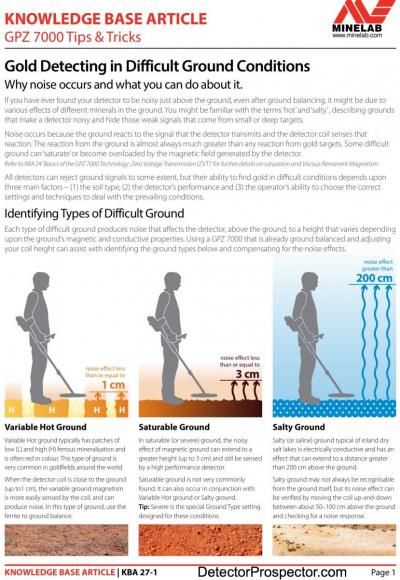
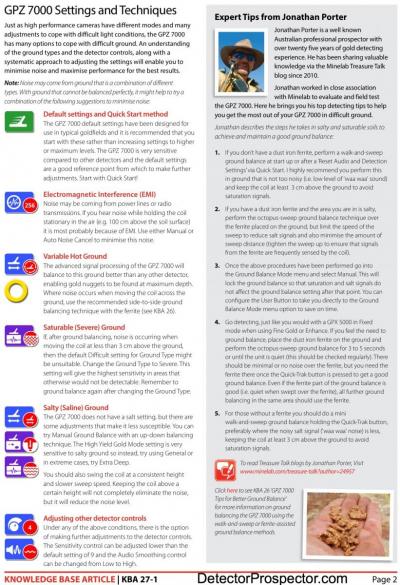
.thumb.jpg.77e4cb5bf39d44bdd2050d2edb7dfdb1.jpg)
